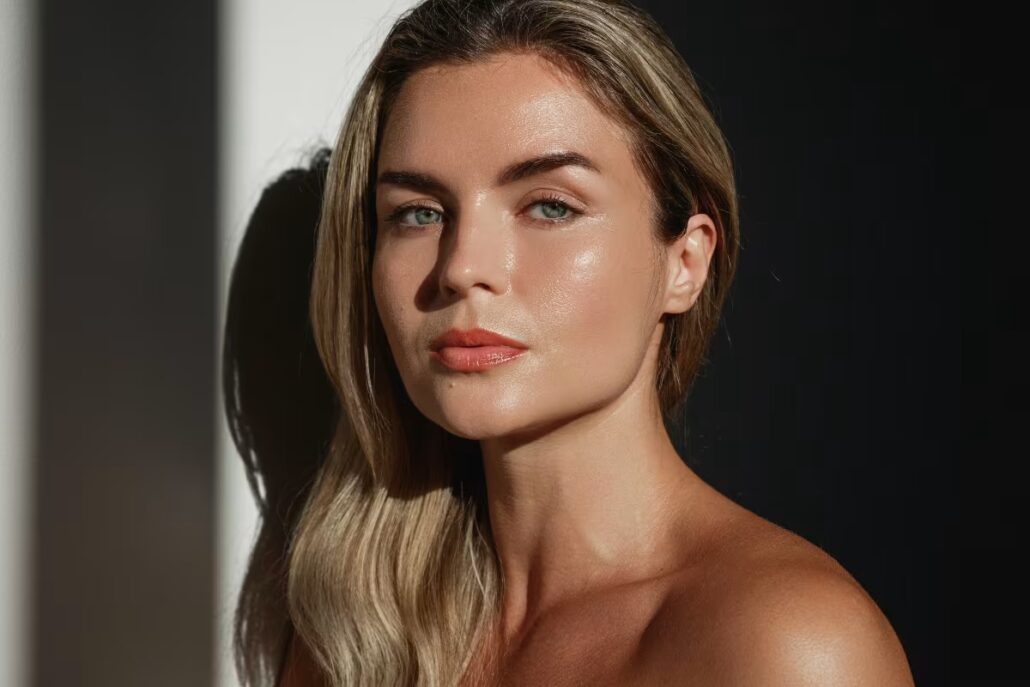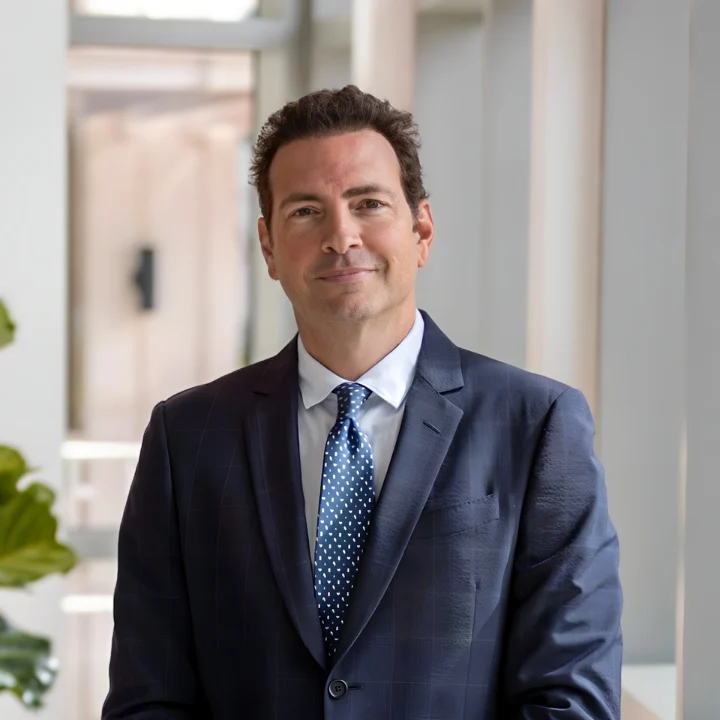Rhinoplasty in Miami Beach, FL
Refine your facial harmony with Dr. Gabe Salloum’s Rhinoplasty in Miami Beach, FL. Our expert nose reshaping surgery enhances your natural beauty, balancing your features for a more aesthetically pleasing appearance.
4.9(69)
Rhinoplasty Benefits
Rhinoplasty precisely reshapes the nose, improving its proportion and alignment with your facial features for a more attractive appearance.
Beyond aesthetics, the surgery corrects structural issues, enhancing nasal breathing and overall functionality.
The improved facial balance and appearance post-surgery can significantly uplift your self-esteem and confidence.
When considering rhinoplasty, it is important for patients to discuss their aesthetic goals with a board-certified facial plastic surgeon. During the consultation, your surgeon will evaluate your nasal structure and function to determine if any underlying health conditions are present that may need to be addressed before proceeding with surgery. Your surgeon may use cartilage grafts from other parts of your body and/or soft tissues from donor sources to reconstruct your nose in order to achieve desired results. In some cases, rhinoplasty may be recommended for medical reasons such as correcting a nasal obstruction caused by structural defects or trauma. Depending on your specific situation, surgical techniques such as remodeling existing cartilage and bone or adjusting soft tissue structures in order to improve overall facial structure may be recommended by your surgeon.

The Rhinoplasty Consultation
The rhinoplasty consultation is an important step in the process of getting a nose job. During the initial visit, your surgeon will discuss various cosmetic procedures and treatment plans with you to determine your surgical goals. This includes discussing breathing issues, concerns about nasal shape, and any other functional or aesthetic issues you may have.
Your surgeon will also examine your ideal nasal shape by examining your bone structure and assessing the cartilage and soft tissue within the nasal canal. In some cases, fat grafting or septoplasty may be recommended to achieve desired results. Ultimately, the rhinoplasty consultation is an essential part of determining which surgical techniques are best suited for each patient’s individual needs.


The Benefits of Rhinoplasty
The benefits of rhinoplasty are numerous for those looking to improve their facial appearance. Rhinoplasty is one of the most popular surgical procedures for those who have crooked noses, a nasal bridge that is too wide or too narrow, or any other structural issue that affects the overall look of the nose. A rhinoplasty surgery will address these issues and help patients achieve a more balanced appearance.
Rhinoplasty can also provide medical benefits in addition to cosmetic ones. Through this nose surgery, patients can improve their breathing by addressing any existing deformities or obstructions in the nasal passageways. The surgeon will create a tailored surgical plan with specific goals based on each patient’s individual needs, such as reshaping nasal cartilage and bones to improve facial symmetry and structure. In some cases, a surgeon may also use soft tissue grafts from donor sources to help cover any exposed nasal skin and provide additional support for the new nose shape. Ultimately, rhinoplasty can provide both aesthetic and functional benefits so patients feel comfortable with their own unique facial appearance while also experiencing improved breathing capabilities.
Rhinoplasty Before and After Pictures
*All patients are unique and individual results may vary.


Who Qualifies for a Rhinoplasty?
Candidates for rhinoplasty must be in good overall health and have realistic expectations about what the procedure can do for them. The ideal candidate is someone looking to improve the shape of their nose and/or improve breathing issues caused by structural deformities.
During a consultation with a board-certified facial plastic surgeon, it will be determined if you are a good candidate based on your medical history, overall health, desired results, and recovery time. Rhinoplasty can help correct a wide range of issues such as a wide or drooping nose or any other structural deformity of the face that affects one’s overall appearance. If you are considering rhinoplasty as an option for cosmetic surgery, it is best to speak with an experienced doctor so that you can make an informed decision about whether or not this procedure is right for you.


How much does rhinoplasty cost?
Generally, rhinoplasty costs range from $3,000 to $7,000. This cost often includes anesthesia fees, operating room fees, and post-operative care such as medications and follow-up visits with your surgeon. Additional charges may be necessary if any extra procedures are needed to address nasal airway issues or correct a wide or drooping nose. It is essential to discuss all associated costs with your surgeon prior to surgery in order to have a better understanding of what you can expect for your overall budget.

The Rhinoplasty Preparation
In preparation for your rhinoplasty procedure, the surgeon will perform a thorough physical exam of your nasal dorsum and internal structures to determine the underlying cause of any aesthetic or functional issues. Your surgeon should also take into account any previous surgery that you had on your nose or any other surgery that you would like to have on pair with your nose job (such as chin augmentation or otoplasty) to ensure that there are no unforeseen complications from combining the two procedures. If you are having septal surgery in conjunction with rhinoplasty, additional steps may be necessary in order to prepare for this procedure.
The Rhinoplasty Surgery
Rhinoplasty is one of the most common plastic surgery procedures used to improve nasal function and aesthetics. During this operation, the surgeon reshapes or resizes the nasal bones to better fit the patient’s facial features. Depending on the patient’s needs, some cartilage may also be removed or added to improve nasal breathing or create a more aesthetically pleasing appearance. The end goal of rhinoplasty is to achieve a harmonious balance between all facial features while improving any functional issues related to poor nasal breathing. Depending on the complexity of the case, cosmetic rhinoplasty can take anywhere from 1–4 hours and patients should expect some downtime for recovery that will vary depending on their individual situation.
The Rhinoplasty Recovery
Rhinoplasty recovery takes time and patience, but the results are worth it. Immediately following surgery, patients can expect some swelling and bruising around the nose that should subside within a few weeks. During this period of recovery, it is important to follow all post-operative instructions provided by your surgeon to ensure proper healing. This includes keeping the head elevated when sleeping or resting and avoiding strenuous activity or exercise for at least four weeks after surgery. Additionally, patients should keep their noses clean and apply ointment to scabs as needed during the healing process. Finally, wearing sunscreen is recommended throughout the recovery period to protect against sunburns. With careful adherence to these post-operative instructions, most patients can expect a full recovery within two months following rhinoplasty surgery.

Risks of Rhinoplasty
A common risk of rhinoplasty is a broken nose. This could occur due to strenuous activity in the period after rhinoplasty. Patients should avoid any activities that put pressure on their nose during recovery as this could disrupt the healing process and result in a broken nose. Additionally, when choosing a plastic surgeon, you should make sure they have experience achieving your desired cosmetic goals and that they use techniques that minimize visible scarring from the procedure. Finally, since rhinoplasty is an outpatient procedure, patients should arrange for transport home following surgery as well as someone who can stay with them for 24 hours afterward for assistance and monitoring if needed.
Why Should I Choose Dr. Gabriel Salloum?
- Dr. Salloum is board-certified by the American Board of Plastic Surgery and the American Board of Surgery.
- He has over 18 years of experience in plastic surgery, providing natural-looking cosmetic results.
- Dr. Salloum completed his general surgery residency at Mount Sinai Medical Center in Miami, serving as Chief Surgical Resident.
- He completed the Hand Surgery Fellowship Program at the University of Virginia Medical Center and is one of the few fellowship-trained reconstructive hand surgery specialists in South Florida.
- Dr. Salloum completed the Plastic Surgery Program at the University of Texas at Houston, with extensive training in cosmetic surgery.
- He has received numerous 4.5 and 5-star reviews on Yelp, Healthgrades, Vitals, RealSelf, and Google, with a consistent track record of successful results and satisfied patients.
- Dr. Salloum is passionate about helping patients meet their cosmetic goals and gain confidence, taking the time to understand each patient and answer questions before creating a unique surgical plan.
- Dr. Salloum offers a full range of plastic surgical procedures, including facelifts, body contouring, liposuction, tummy tucks, thigh lifts, Brazilian butt lifts, and breast reconstruction, specializing in reconstructive surgery, ultrasound-assisted liposuction, facial restructuring, and body contouring.
- Named a NYT and Miami Best Doctor.

Frequently Asked Questions about Rhinoplasty
Will insurance pay for rhinoplasty?
It depends. Some insurance policies will, but only if there is a medical reason.
Is rhinoplasty painful?
Anesthesia is always used for a rhinoplasty. This means you will not feel pain during the procedure. Discomfort during the recovery period should be minimal, and you will likely receive a prescription for pain medication to get you through the first few days.
Will I bruise from rhinoplasty?
You will experience some swelling, but bruising is rare. The swelling will gradually resolve on its own.
Can I go back to work the day after rhinoplasty?
No. Even though rhinoplasty does not require months for the healing process, patients still need proper rest. The first day after surgery is the most important day to stay at home. Patients who elevate their heads will reduce any swelling and bleeding. Many rhinoplasty patients take approximately 1 week off before returning to their job.
What results should I expect from a nose job?
First, the patient may not see the full results of a rhinoplasty procedure immediately. Bruising and swelling can take several months to subside, and the refinement of the nose shape occurs over time. The patient’s own nasal cartilage may continue to grow post-operation, causing subtle changes in the nose’s appearance.
With that said, the expected results of rhinoplasty include an improved overall aesthetic appearance of the nose, which may mean reshaping or resizing the nose to better fit the patient’s facial features. The surgeon can customize the procedure to the individual’s preferences, with a focus on creating a harmonious, balanced look that complements the rest of the face.
Beyond aesthetics, rhinoplasty can also address functional issues such as breathing difficulties caused by a deviated septum or other nasal passage problems. This can greatly improve the patient’s quality of life and may even help with their participation in physical activities such as sports.
How much does rhinoplasty cost?
The cost of rhinoplasty depends on multiple factors. Since not all rhinoplasty procedures are the same, the cost will vary. For those who want to alter both the nasal bridge and nostrils, the price may be more expensive. Insurance will also play a large factor in cost. Insurance might pay for some or all of the procedure if it is for a medical purpose. A typical rhinoplasty can cost anywhere from $5,000 to $10,000.
Can other procedures be combined with my nose job?
Cosmetic procedures are often paired together. Since patients are already under anesthesia, the doctor can accomplish multiple surgeries at one time. The most common surgeries paired with a rhinoplasty include eyelid surgery and chin augmentation. These procedures are designed to reshape the face. A chin augmentation redefines the jawline whereas eyelid surgery is primarily used to treat bags below the eyes or to fix drooping upper eyelids.
What rhinoplasty office is near me?
If you live near Miami Beach, FL, Miami Center for Plastic Surgery offers rhinoplasty among its services and is conveniently located at 4308 Alton Road #720 Miami Beach, FL 33140.